We can visualise the tiny openings used by plants to exchange gases, called stomata, using nail varnish and a compound microscope. The image generated is shown on the right under a magnification of X400. Click to see a more detailed view of the stomata shown on the right.

The aim of the exercise is to calculate the density of stomata from the top and bottom surfaces of a leaf from different plants.
Formulate a hypothesis for this experiment.

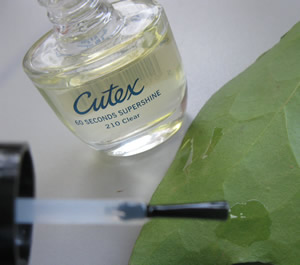
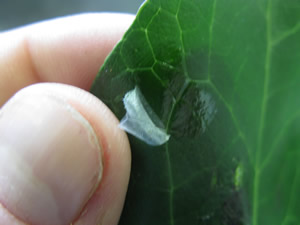

Using a plastic clear ruler measure the width of field at low power X40 and at X100
The image on the right shows the mm markings of a ruler magnified at X40. What is the field of width in mm under X200 magnification?
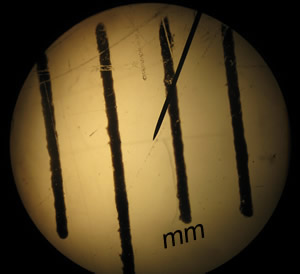
This image of the stomata is taken at a magnification of X400.
a) What is the width of field?
b) If 1.0 mm = 1,000 µm (micrometres) what is the width of field on micrometres?

You will notice that each pore or stoma is surrounded by two sausage shaped cells, called guard cells. This cells change shape and hence control the size of the stoma. They are usually evenly distributed in the leaves of monocots. Stomata close during the heat of the day, to reduce loss of water through transpiration, but open at night to absorb carbon dioxide for use in photosynthesis. Guard cells contain chloroplasts (not visible in the image shown on the right) and can be seen with a compound microscope.
c) Using the image above, calculate the average length, in µm, of a stoma as shown on the right. Describe the shape of the stomata on this particular plant.
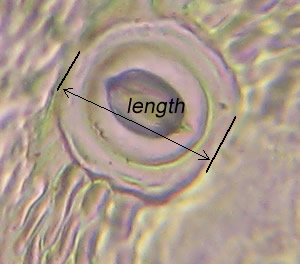
d) The image on the right shows the distribution of stomata on the underside of a leaf from the plant used previously. Calculate the density of stomata in number per mm2
Click for a more detailed image.
You do not have to count all the stomata, you may count a section of the slide, say a quarter, and multiply the result by 4, assuming they are evenly distributed.
i) What do you notice about the density of the upper surface compared to the bottom surface of the leaf?
ii) Often, a high density of stomata on the upper surface indicates fast growth and wet climate, whereas a low density of stomata indicates a lower rate of growth or adaptations to dry, desert like conditions. Explain why.
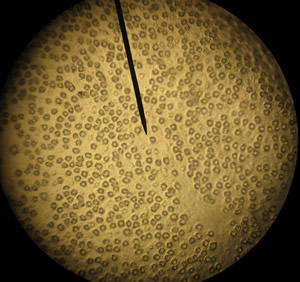
Set up an investigation to answer one of the following questions.
Is there an even distribution of stomata over the leaf surface or does the distribution vary?
Does the density of stomata vary between different leaves of the same plants?
Does the density of stomata vary between different plants of the same species?
Does the density vary between plants from different habitats?
Is there a pattern between habitat and distribution of stomata on both surfaces of the plant leaves?
Write the:
-
aim of the investigation
- hypothesis
- material
- procedure